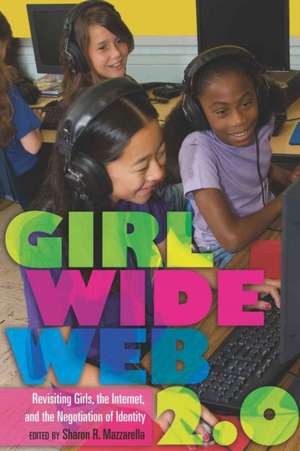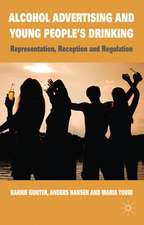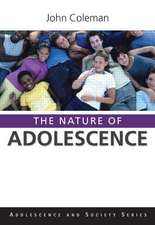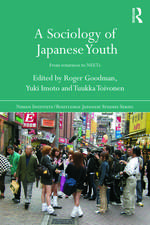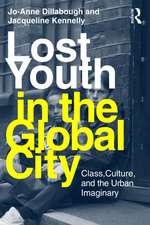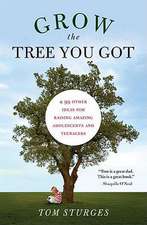Girl Wide Web 2.0: Mediated Youth, cartea 9
Editat de Sharon R. Mazzarellaen Limba Engleză Hardback – 15 sep 2010
| Toate formatele și edițiile | Preț | Express |
|---|---|---|
| Paperback (1) | 275.77 lei 38-44 zile | |
| Peter Lang Gmbh, Internationaler Verlag Der W – 7 sep 2010 | 275.77 lei 38-44 zile | |
| Hardback (1) | 738.85 lei 38-44 zile | |
| Peter Lang Gmbh, Internationaler Verlag Der W – 15 sep 2010 | 738.85 lei 38-44 zile |
Din seria Mediated Youth
-
 Preț: 190.19 lei
Preț: 190.19 lei -
 Preț: 406.60 lei
Preț: 406.60 lei - 20%
 Preț: 656.25 lei
Preț: 656.25 lei - 20%
 Preț: 351.16 lei
Preț: 351.16 lei -
 Preț: 457.23 lei
Preț: 457.23 lei -
 Preț: 479.77 lei
Preț: 479.77 lei -
 Preț: 479.77 lei
Preț: 479.77 lei - 9%
 Preț: 748.59 lei
Preț: 748.59 lei - 9%
 Preț: 782.59 lei
Preț: 782.59 lei - 27%
 Preț: 1084.52 lei
Preț: 1084.52 lei - 23%
 Preț: 907.71 lei
Preț: 907.71 lei -
 Preț: 380.73 lei
Preț: 380.73 lei - 27%
 Preț: 1017.14 lei
Preț: 1017.14 lei - 23%
 Preț: 652.48 lei
Preț: 652.48 lei -
 Preț: 395.20 lei
Preț: 395.20 lei -
 Preț: 396.17 lei
Preț: 396.17 lei -
 Preț: 282.11 lei
Preț: 282.11 lei - 27%
 Preț: 1062.73 lei
Preț: 1062.73 lei - 27%
 Preț: 996.07 lei
Preț: 996.07 lei -
 Preț: 393.29 lei
Preț: 393.29 lei - 27%
 Preț: 1002.54 lei
Preț: 1002.54 lei -
 Preț: 389.42 lei
Preț: 389.42 lei -
 Preț: 333.78 lei
Preț: 333.78 lei -
 Preț: 372.25 lei
Preț: 372.25 lei -
 Preț: 391.38 lei
Preț: 391.38 lei - 9%
 Preț: 639.67 lei
Preț: 639.67 lei -
 Preț: 328.53 lei
Preț: 328.53 lei -
 Preț: 247.19 lei
Preț: 247.19 lei - 9%
 Preț: 736.51 lei
Preț: 736.51 lei - 7%
 Preț: 185.51 lei
Preț: 185.51 lei
Preț: 738.85 lei
Preț vechi: 811.92 lei
-9% Nou
Puncte Express: 1108
Preț estimativ în valută:
141.40€ • 147.08$ • 116.73£
141.40€ • 147.08$ • 116.73£
Carte tipărită la comandă
Livrare economică 10-16 aprilie
Preluare comenzi: 021 569.72.76
Specificații
ISBN-13: 9781433105500
ISBN-10: 1433105500
Pagini: 288
Ilustrații: num. ill., tables and graphs
Dimensiuni: 156 x 231 x 22 mm
Greutate: 0 kg
Ediția:2. Auflage.
Editura: Peter Lang Gmbh, Internationaler Verlag Der W
Seria Mediated Youth
ISBN-10: 1433105500
Pagini: 288
Ilustrații: num. ill., tables and graphs
Dimensiuni: 156 x 231 x 22 mm
Greutate: 0 kg
Ediția:2. Auflage.
Editura: Peter Lang Gmbh, Internationaler Verlag Der W
Seria Mediated Youth
Notă biografică
Sharon R. Mazzarella (Ph.D., University of Illinois) is Professor and Director of the School of Communication Studies at James Madison University. Her research interests are in girls' studies and the representational politics of mediated portrayals of youth. She is editor of 20 Questions about Youth and the Media (Peter Lang, 2007), Girl Wide Web: Girls, the Internet, and the Negotiation of Identity (Peter Lang, 2005), and co-editor of Growing Up Girls: Popular Culture and the Construction of Identity (Peter Lang, 1999).
Cuprins
Contents: Dafna Lemish: Foreword ¿ Sharon R. Mazzarella: Introduction ¿ Paola Prado: The Girls of El Seybo: Logging in to a Different Manaña ¿ Rodda Leage/Ivana Chalmers: Degrees of Caution: Arab Girls Unveil on Facebook ¿ Carla E. Stokes: «Get on My Level»: How Black American Adolescent Girls Construct Identity and Negotiate Sexuality on the Internet ¿ Narissra Maria Punyanunt-Carter/Jason M. Smith: East Meets West: Is There a Difference Between Thai and American Girls¿ Use of the Internet and Negotiation of Identity? ¿ Michelle S. Bae: Go Cyworld!: Korean Diasporic Girls Producing New Korean Femininity ¿ Jaime Warburton: Me/Her/Draco Malfoy: Fangirl Communities and Their Fictions ¿ Kristine Blair/Erin Dietel-McLaughlin/Meredith Graupner Hurley: Looking into the Digital Mirror: Reflections on a Computer Camp for Girls by Girls ¿ Claudia Mitchell/John Pascarella/Naydene De Lange/Jean Stuart: «We Wanted Other People to Learn from Us»: Girls Blogging in Rural South Africa in the Age of AIDS ¿ Jacqueline Ryan Vickery: Blogrings as Virtual Communities for Adolescent Girls ¿ Jill Denner/Jacob Martinez: Whyville versus MySpace: How Girls Negotiate Identities Online ¿ Lillian Spina-Caza: When Girls Go Online to Play: Measuring and Assessing Play and Learning at Commercial Websites ¿ Denise Sevick Bortree: Talking Pink and Green: Exploring Teen Girls¿ Online Discussions of Environmental Issues ¿ Sharon R. Mazzarella/Allison Atkins: «Community, Content, and Commerce»: Alloy.com and the Commodification of Tween/Teen Girl Communities.
Recenzii
The global complexities of girlhood, new media, and identities are highlighted in this cutting-edge anthology. Girlhood is broadly defined, encompassing a range of ages as well as social locations across class, nation, race, ethnicity, and sexuality; the authors are acutely aware of the ways in which power and politics circumscribe the new media environment, addressing the impacts on girls' lives of the digital divide, poverty, gender violence, transnational marketing and consumerism, and cultural forces. At the same time, girls' self-definition, agency, and resistance shines through in these essays, as girls tap into the power of the Web and use it to articulate their diverse experiences and stances. This is an important and exciting follow-up to the first Girl Wide Web anthology, expanding the scope and substance of contemporary girl studies. (Meenakshi Gigi Durham, Associate Professor, University of Iowa, author of 'The Lolita Effect') This compelling sequel to Girl Wide Web expands and enriches our understanding of both girlhood and the Internet during the Web's second generation. Validating girls' media practices around the globe while also complicating notions of agency, literacy, community, and civic engagement via attention to difference, the contributors and their research subjects demonstrate the complex interactions, negotiations, and performances of girls' participatory cyberculture. (Mary Celeste Kearney, author of 'Girls Make Media')
